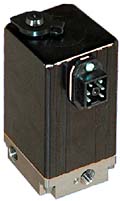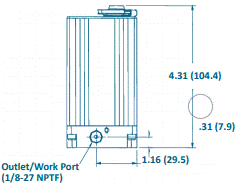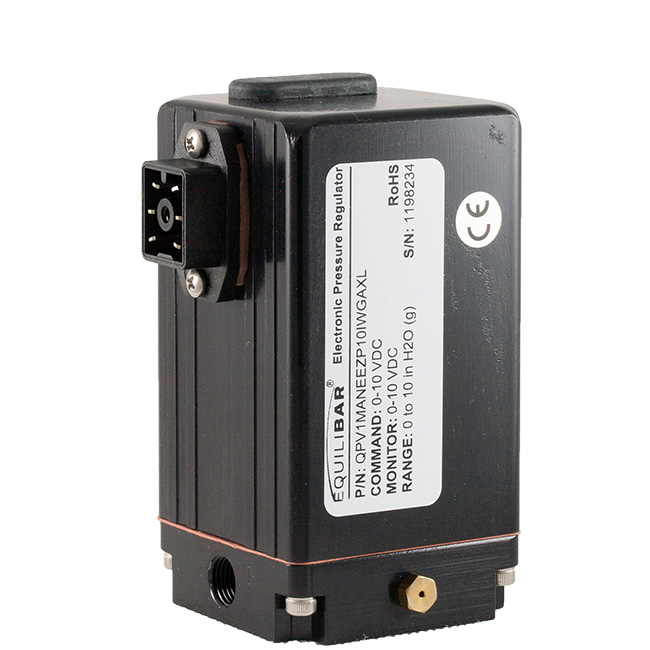QBS High Pressure Electronic Pressure Regulator
| Port Sizes: |
|
||||
| Max Pressure (Std Body Mat’l) |
|
||||
| Body Material (Standard): |
|
||||
| Key Applications: |
|

QBS High Pressure Electronic Pressure Regulator
The QBS series is an electronic pressure regulator designed to accurately control the pressure of gaseous media proportional to an electronic signal. It controls pressures from full vacuum up to 500 psig /35 bar(g).
The QBS is most often used to provide the pilot reference pressure to an Equilibar® back pressure regulator. However, the QBS is useful in any application where a relatively small closed volume requires the pressure to be either accurately or remotely controlled. The QBS product series comes with an electronic monitor output signal. This monitor output is an electrical signal originating from the internal pressure transducer used in the control circuit. The signal allows the system pressure to be remotely monitored and also provides a useful signal for data acquisition. The output of this signal can be configured to either 0- 10Vdc or 4-20mA.
*Not intended for hazardous/explosive environments. *Meant for use with air or inert gases only.

QBS High Pressure Electronic Pressure Regulator

QBS High Pressure Electronic Pressure Regulator

QBS High Pressure Electronic Pressure Regulator
- Electonic pressure confrol of air and inert gases
- Electronic pilot setpoint regulator for Equilibar back pressure regulator

QBS High Pressure Electronic Pressure Regulator
The QBS operates using two normally closed solenoid valves, a pressure sensor, and a control circuit. One valve is actuated to allow unregulated supply media to flow in and raise the system pressure. The second valve is actuated to allow working media to vent to atmosphere and lower the pressure in the system. An internal pressure sensor provides feedback to the control circuit.
The control circuit compares the pressure sensor feedback to the user supplied electronic command signal and actuates the appropriate solenoid valve until the two signals match.
The QBS2 is similar to the QBS1 but uses a double loop control scheme. In addition to the internal pressure transducer, the QBS2 also receives a 0-10Vdc feedback signal from an external pressure sensing device. The external pressure signal functions as the primary feedback and is compared directly to the command signal.




